As usual, I have the opportunity to return to Guyana at the end of October to participate with the radio club FY5KE RACK (Radio club of Kourou) at the CQ WW DX SSB 2019. a few days before the weekend, from 22 to 25 October 2019, and this as much as time allows, we hope to make the first contacts via the new geostationary satellite Qatar Oscar 100, from French Guyana.
The celestial mechanics
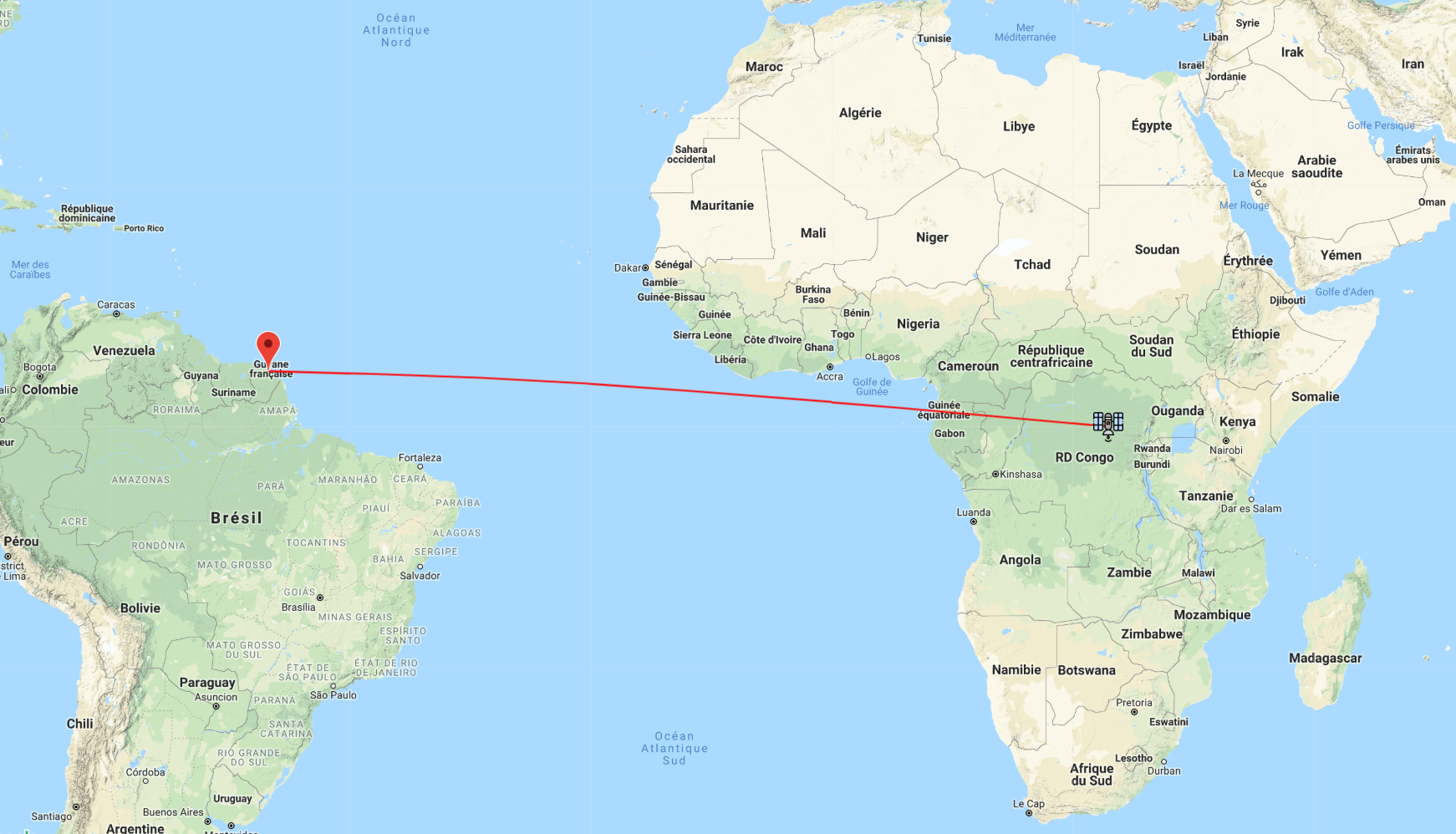
Kourou is very close to the equator, at 5 degrees latitude in the northern hemisphere, and longitude 52 degrees west. The geostationary satellite positioned at 26°East longitude with a distance of 41,400 km from Kourou. To be able to focus the satellite from Kourou, we will have to point the sky full East with only 2.8 degrees of elevation above the horizon. This will not necessarily be obvious, especially if we find tropical vegetation on our way. The Skew angle is remarkable, it is very close to 90°: the polarized wave at the departure vertically by the satellite arrives practically in a horizontal way.
- Latitude: 5.1745°
- Longitude: -52.6865°
- Locator: GJ35PE
Pointing
The operators
We will be two operators, who will try to activate FY for the first time on QO-100: Florent F4CWN and Christian F5UII.
The equipments
Satellite dish
The dish used will be “limited” to an 80cm television offset dish.
Transmitters/receivers
We are bringing with us two transceivers, of two different technologies.
The F4CWN equipment: Very compact Up/Down converter
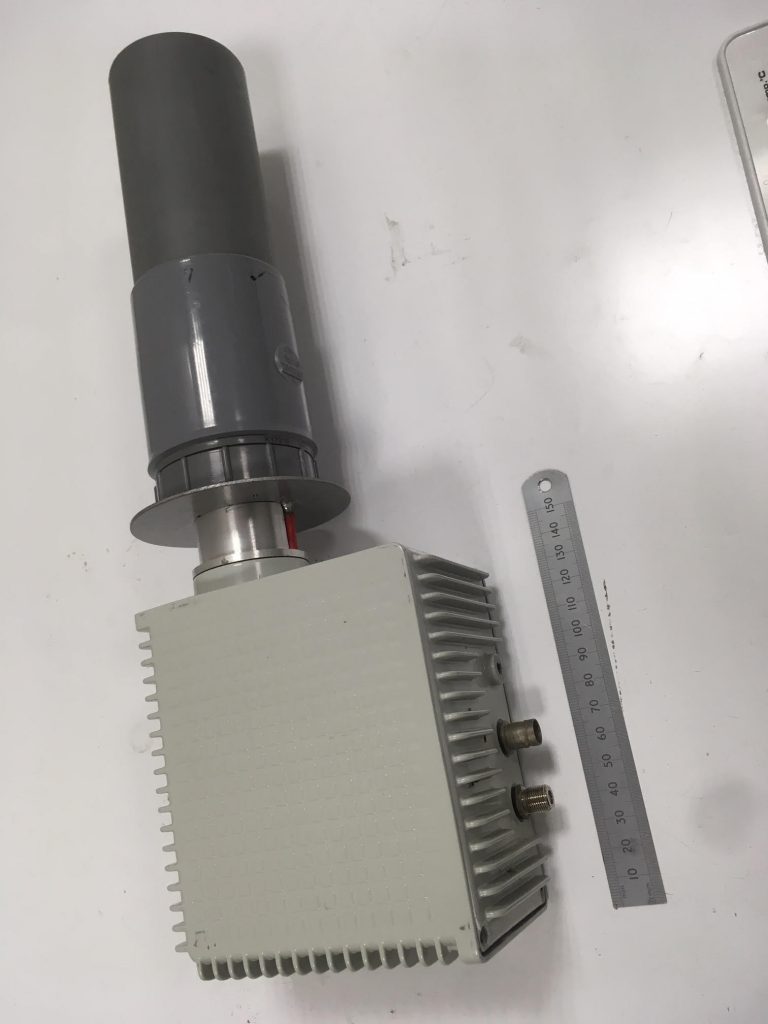
Specifications
• IF : 431 MHz, 2w drive
• Outpout power P3dB 40W
• Input NF : 1.5dB
• Rx Conversion Gain : 30dB
• Single ADF4351 based Local Oscillator
• Size : 13x12x8cm box
• Weight: 1.7 kg
• UpConverter/DownConverter/PA F6BVA Design
Thanks to F6BVA who has made the design, and also to F1GHB, F1VL, F4BXL, F5AQC, F5BUU, F5NZZ who participated to the success of this project.
The F5UII equipment: Transmitter / receiver of SDR technology
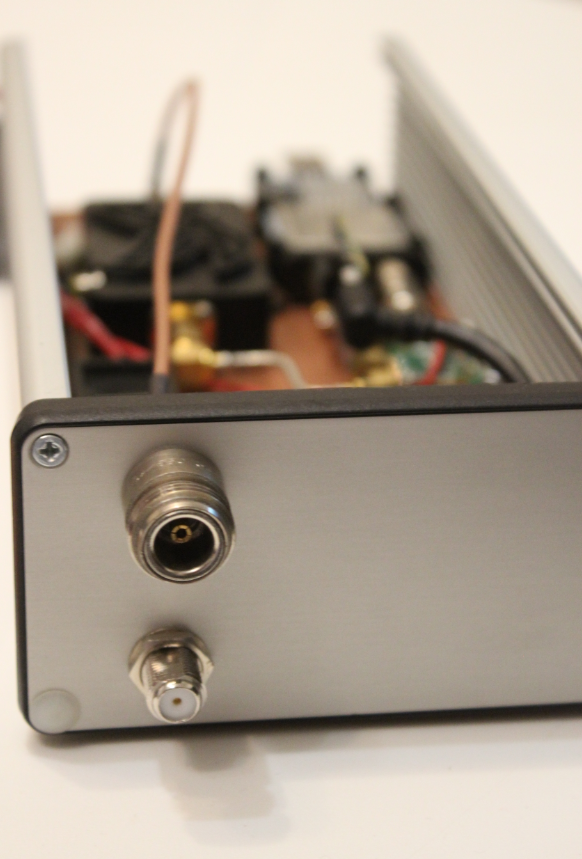
Specifications
• Full Duplex SDR Transmiter Receiver : Lime SDR Mini
• Output power P3dB 2,5W
• Amplification : 31dBm (CN0417 + EDUP AB007)
• Dimensions: box of 24 x 10 x 5.5 cm
• Weight: 0.8 kg
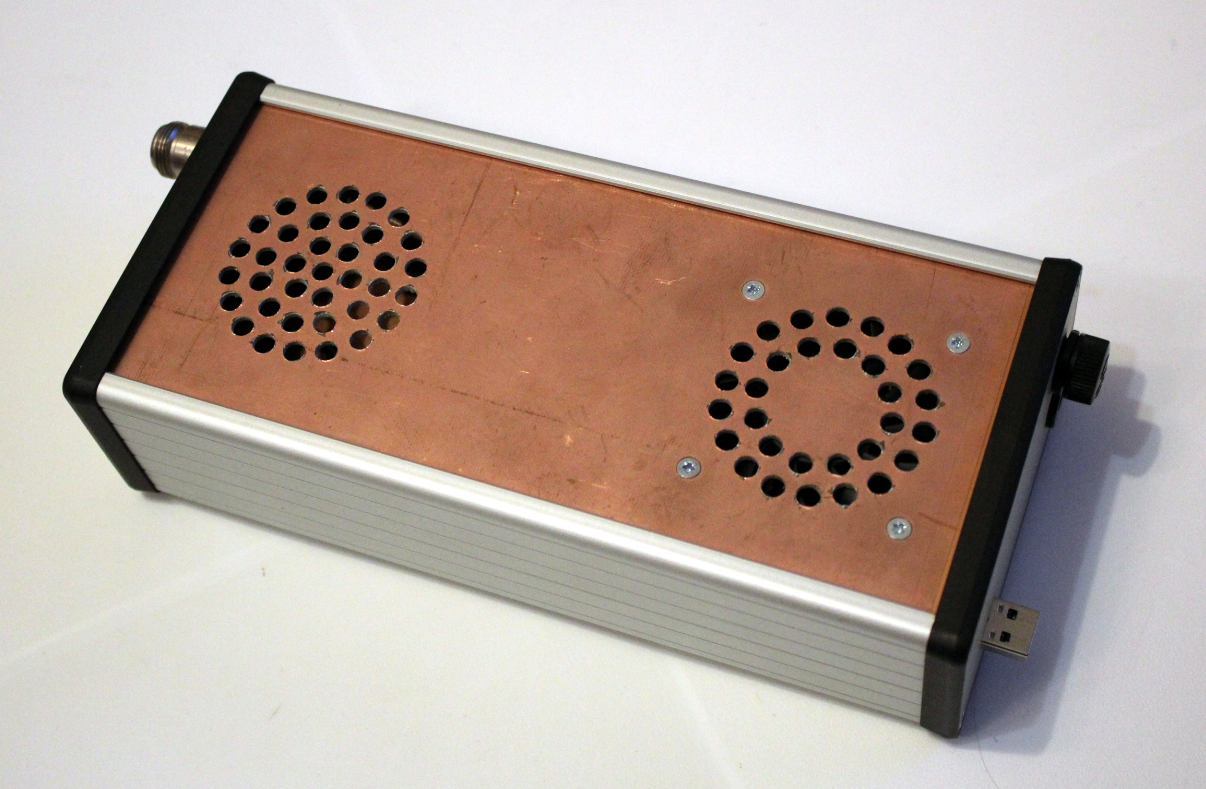
Activation schedules
Unfortunately, there is no specific activation program, as the main objective of this week in French Guiana is not traffic via the geostationary satellite, but first and foremost the implementation of the FY5KE station for the CQ WW DX Contest on 6 bands, in SSB. Nevertheless, we hope to find some slots available between October 22nd (~23 UTC) and October 25th to make the very first contacts since FY on QO100. We apologize to those who will not have the opportunity to contact us….
Real-time news
You can get news from us by following the publications made through the @f5uii twitter account.


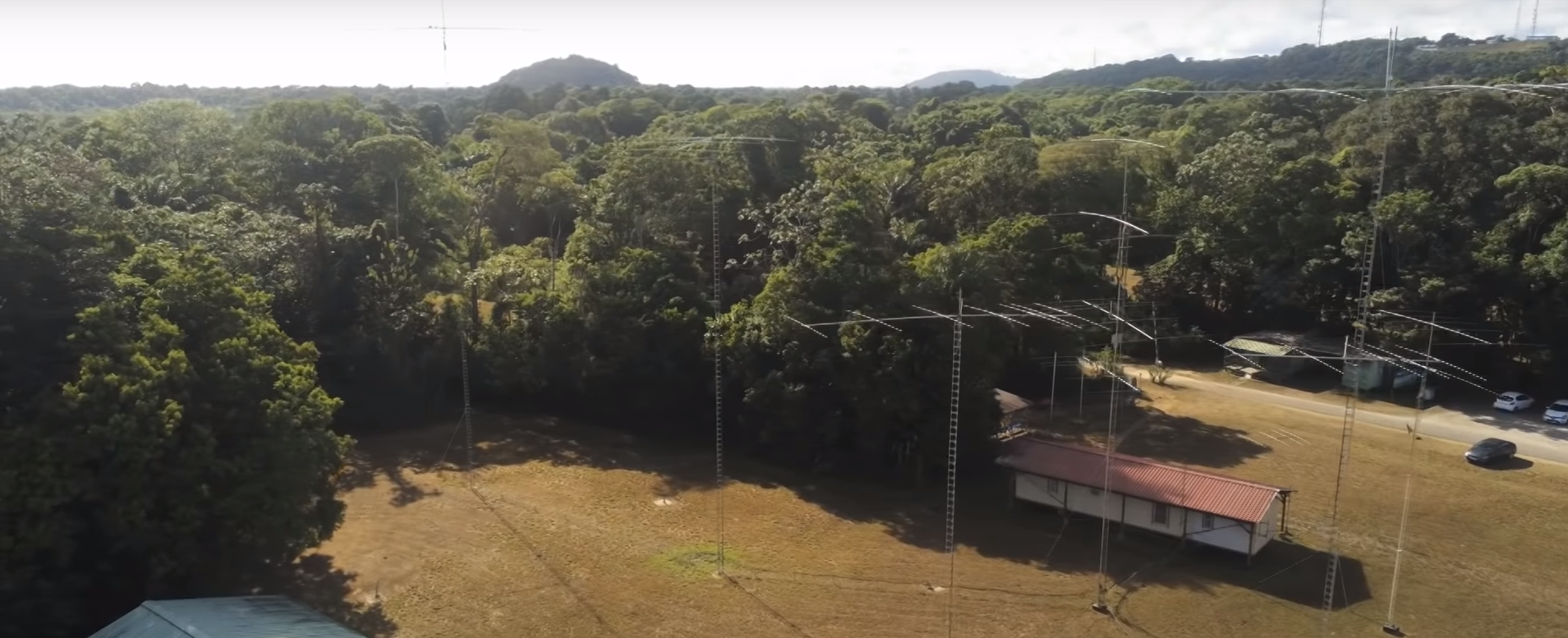
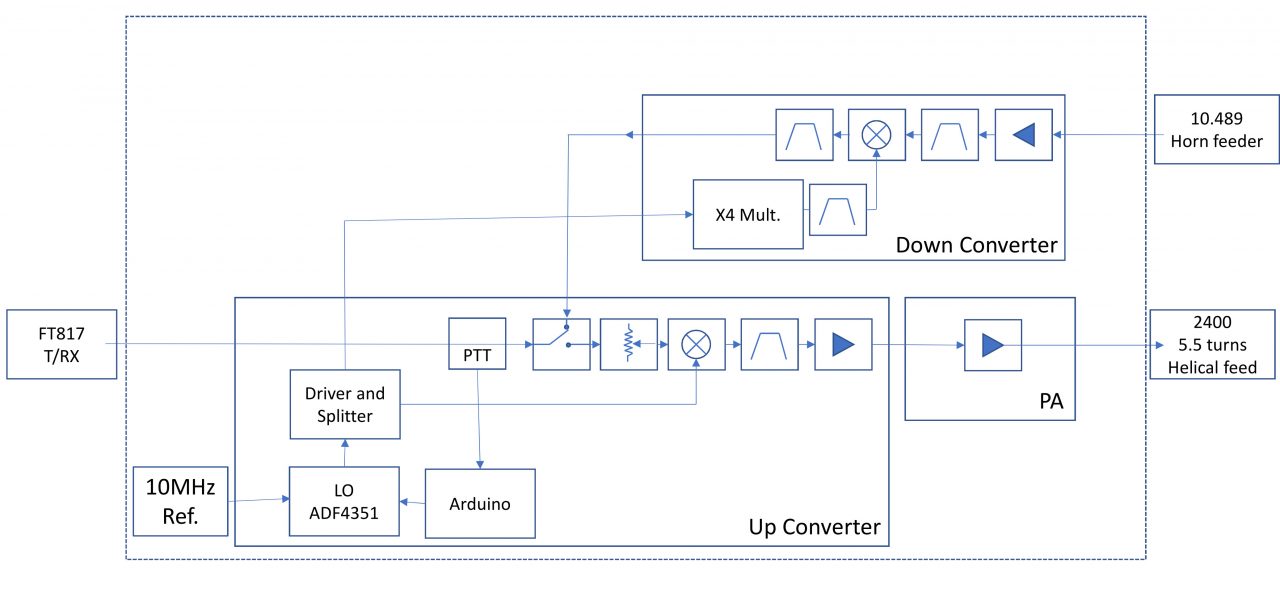
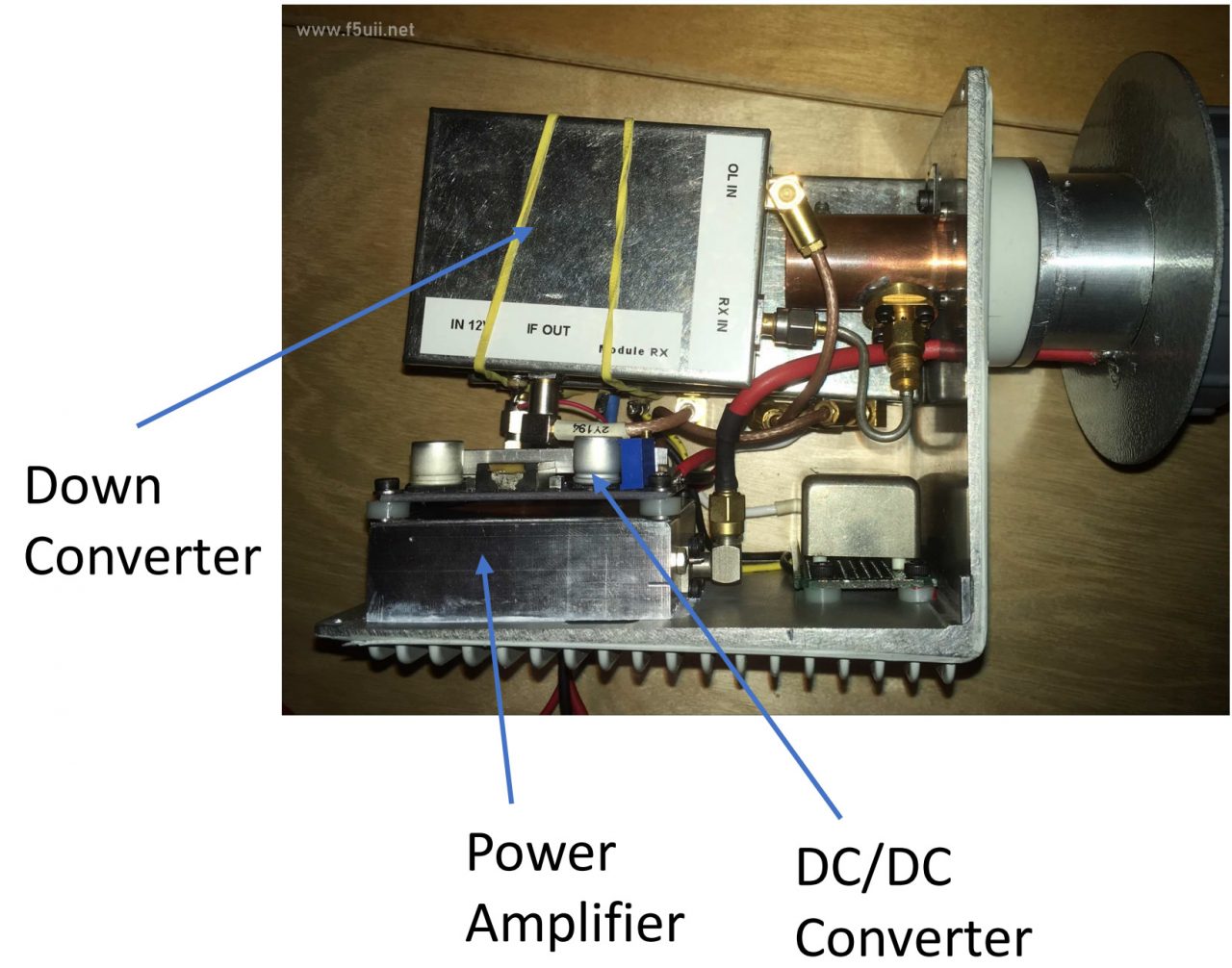
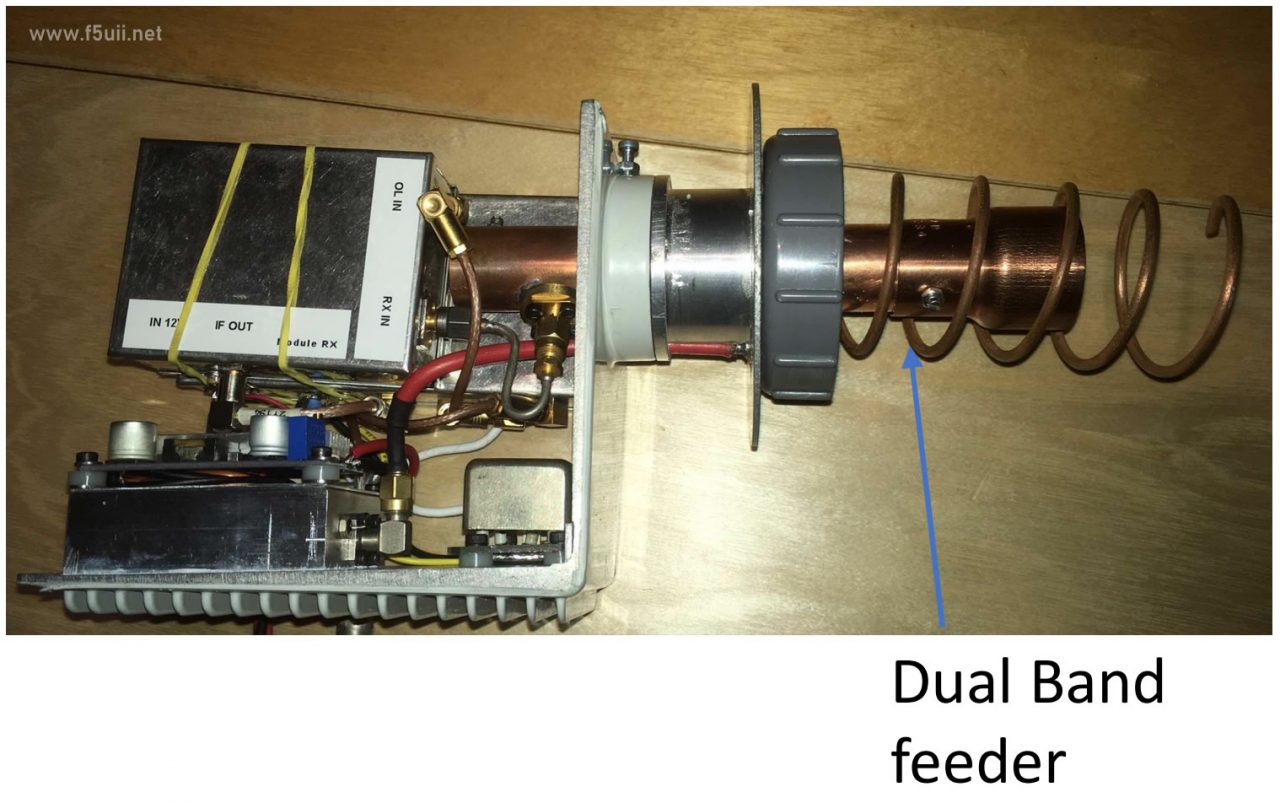
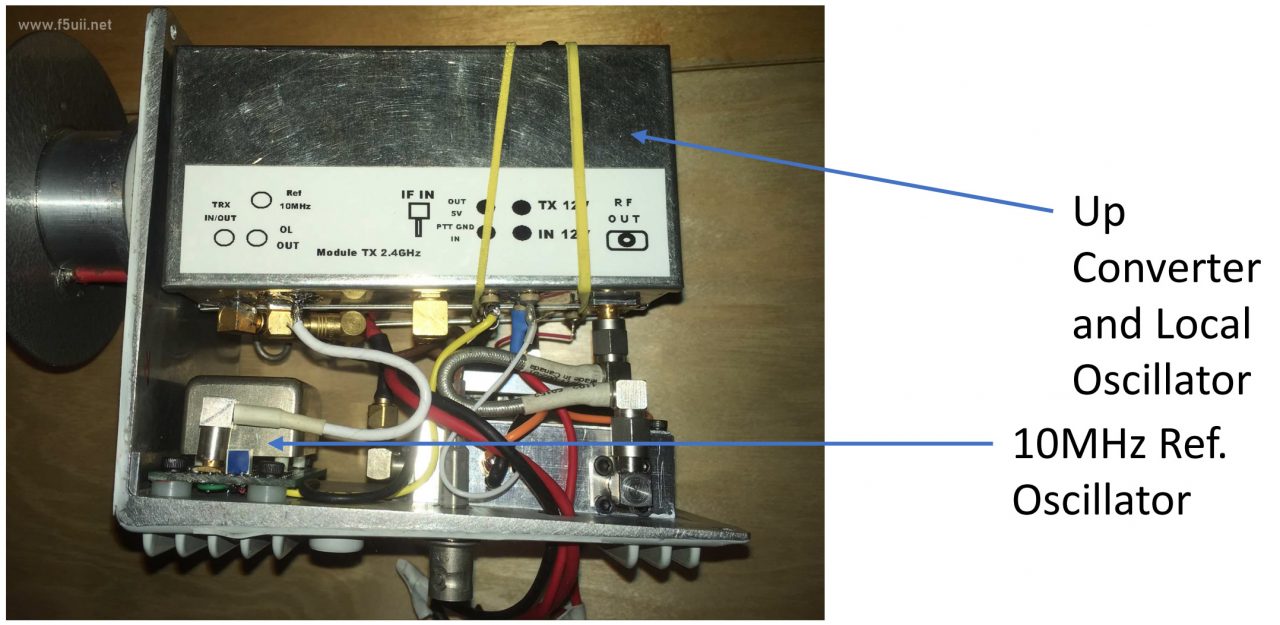
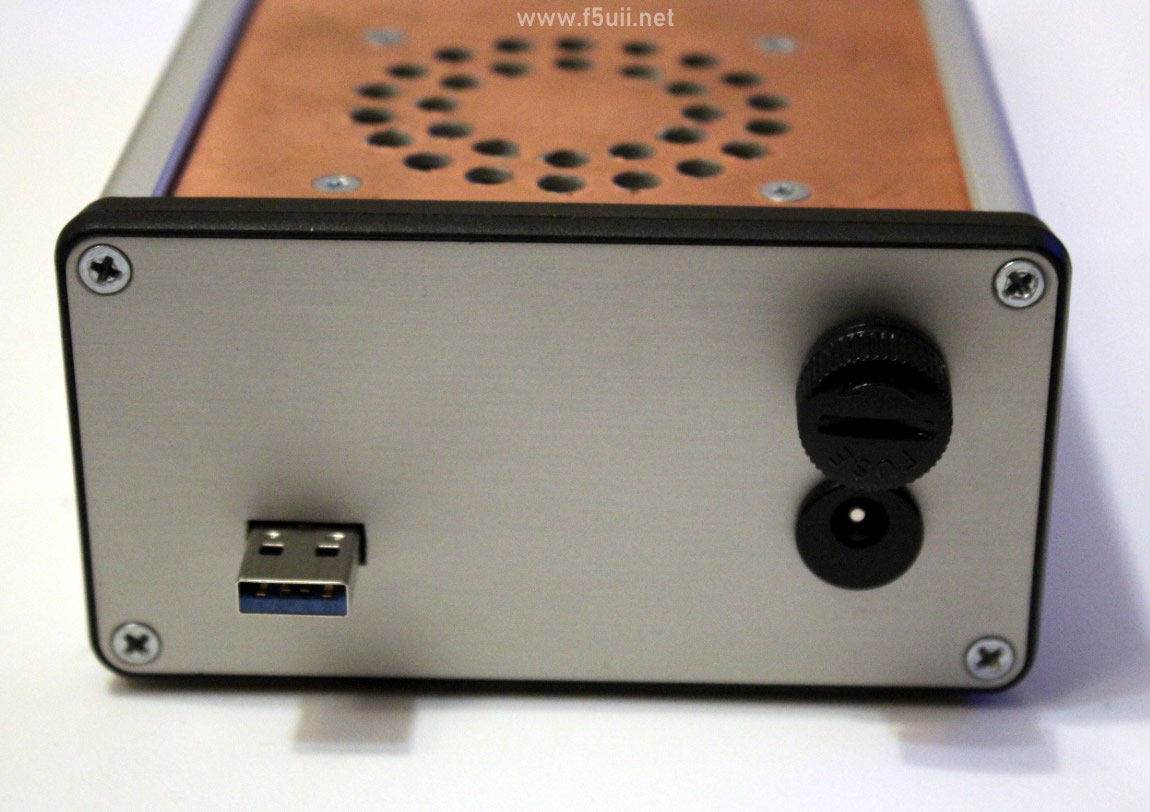
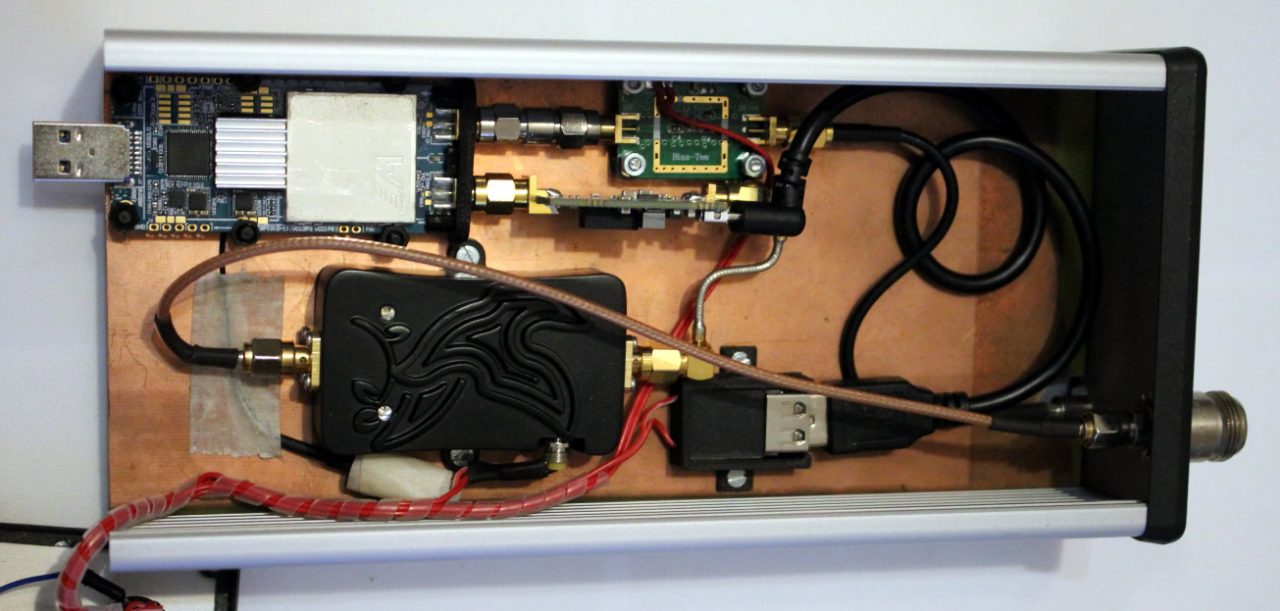
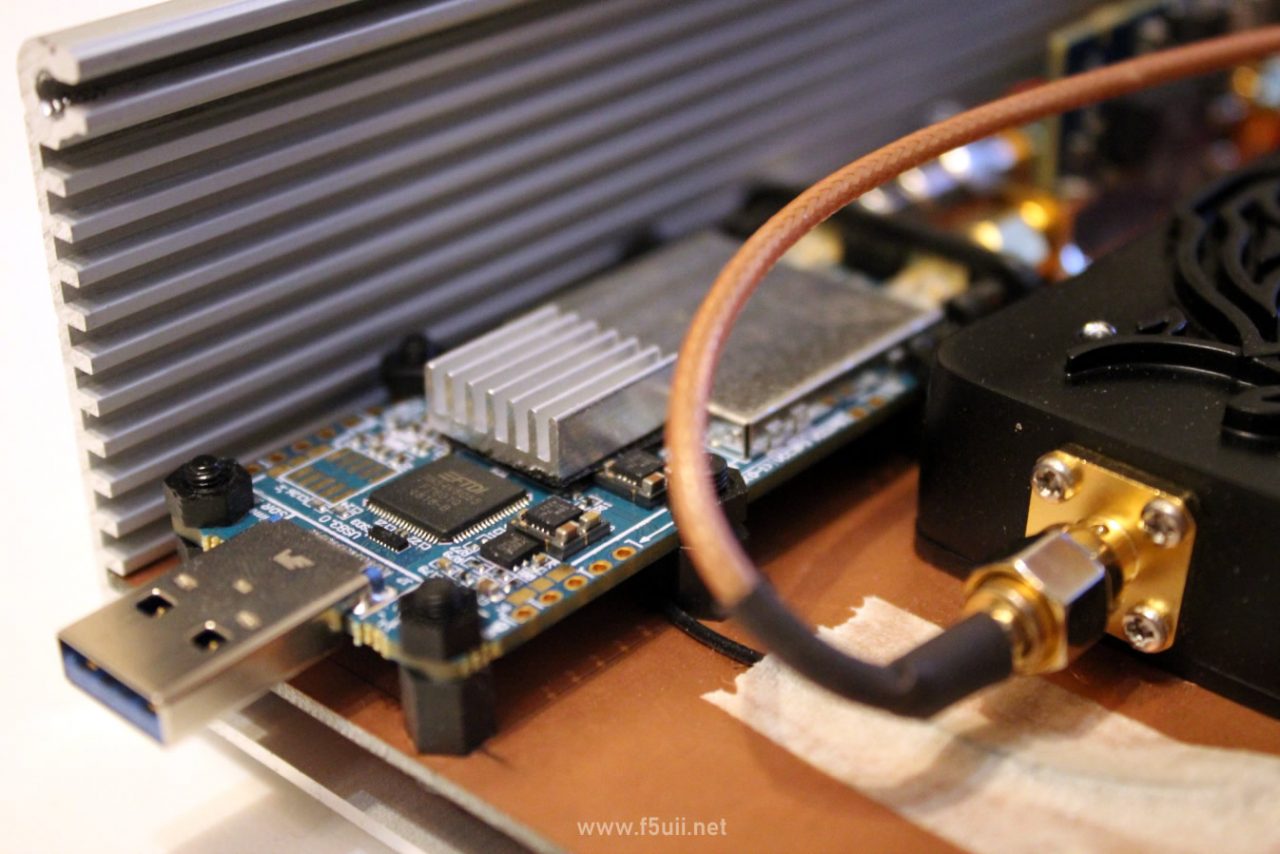
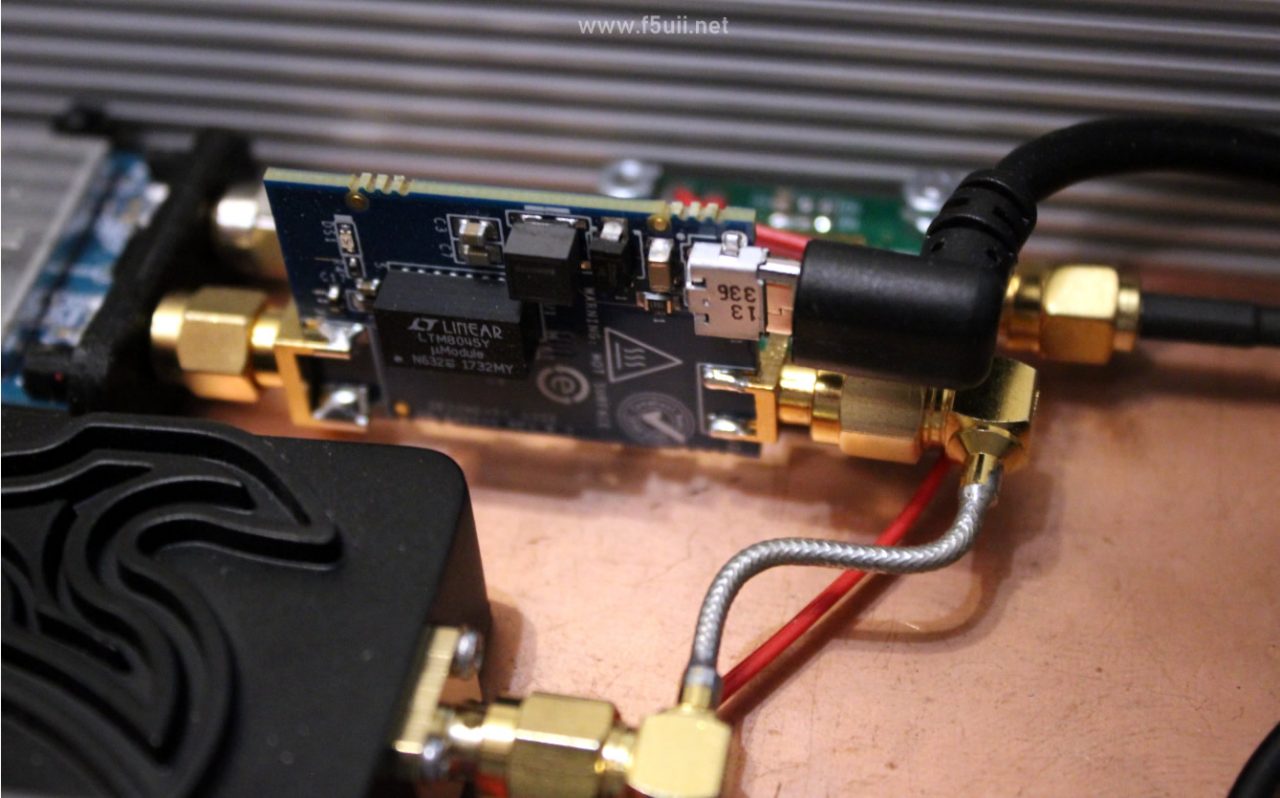
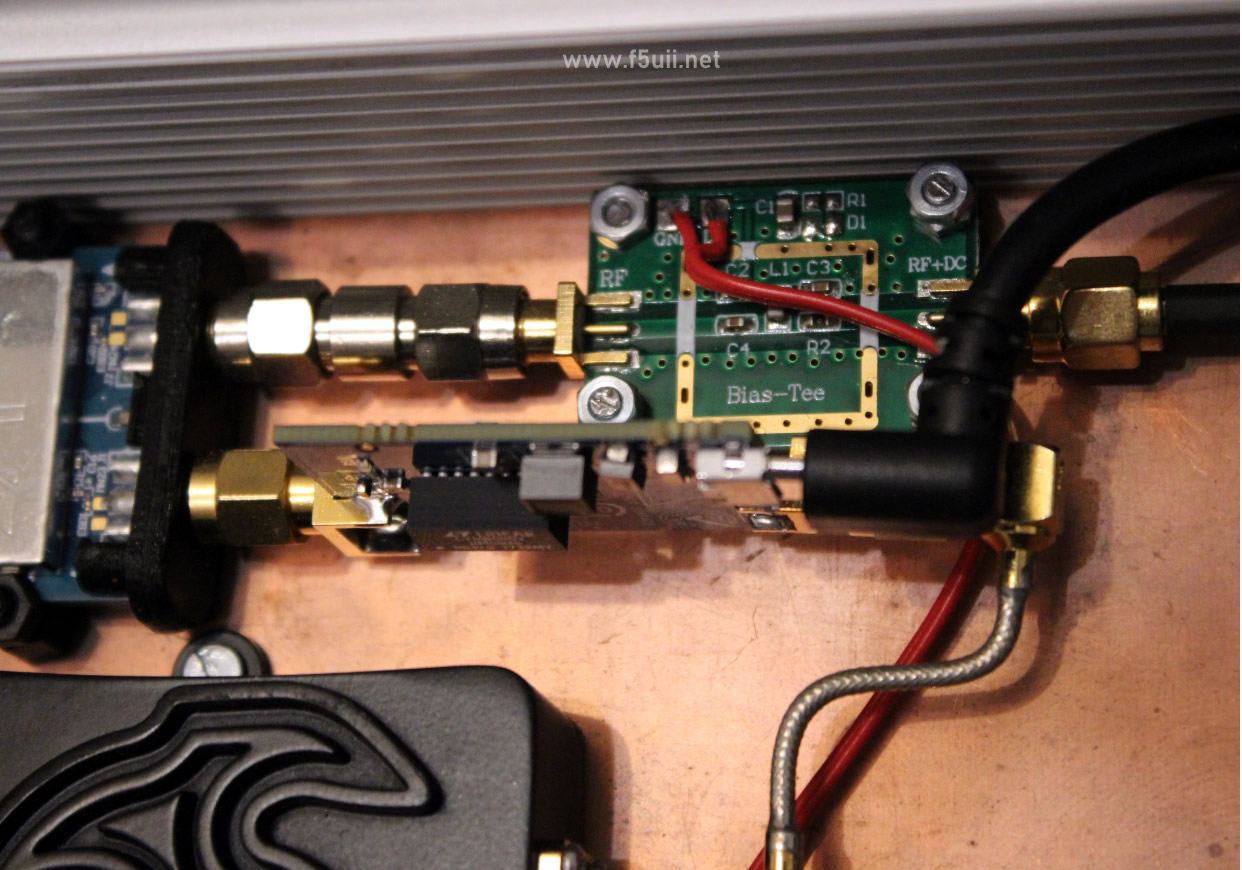
Hello 🙂
i hope you will be QRV on QO-100 after 15:00-16:00 UTC to give a chance to working people also a chance to work FY.
GL and best DX, Franz
(Traduction)
Bonjour 🙂 J’espère que vous serez QRV sur QO-100 après 15:00-16:00 UTC pour donner une chance aux travailleurs.
Bonjour,
Pour information, un compte-rendu de l’activité sera publié dans la revue Radio-REF (membres du REF) de décembre 2019, et également dans le Journal des membres de l’AMSAT-DL en décembre 2019.
Bonne lecture
Christian F5UII
(Translation)
Hello,
For information, a report of the activity will be published in the December 2019 edition of the radio-ref magazine (REF members), and also in the December 2019 issue of the AMSAT-DL Journal in December 2019.
Have a good reading
Christian F5UII
Hi Christian,
I am Ram VU2GRM,
I have configured Lime Mini SDR and using SDR Console v3.0.20 software. It is working fine on SSB. With a virtual cable I am able to receive SSTV with MMSSTV S/w. On transmit, a drift is seen on the signal and no one is able to lock on to my signals. Lime is connected to the PC through a externally powered hub. Could you please let me know how to solve this.
I am also keen on using this on CW. How can I do this ?
I have fan over the Lime and temperature is around 32-35 deg. Have not provided any heat sink as seen in your QRZ page. Should this be ok ?
Regards
73
(Traduction)
Bonjour Christian,
Je suis Ram VU2GRM,
J’ai configuré Lime Mini SDR et j’utilise le logiciel SDR Console v3.0.20. Il fonctionne bien sur SSB. Avec un câble virtuel, je suis capable de recevoir SSTV avec MMSSTV S/w. A l’émission, on voit une dérive sur le signal et personne ne peut se verrouiller sur mes signaux. Le LimeSDR est connecté au PC par un hub alimenté. Pourriez-vous me faire savoir comment résoudre ce problème ?
J’aimerais également utiliser ce système en CW. Comment puis-je faire cela ?
J’ai un ventilateur sur le LimeSDR et la température est d’environ 32-35 degrés. Je n’ai pas fourni de dissipateur thermique comme vous pouvez le voir sur votre page QRZ. Est-ce que cela devrait aller ?
Je vous remercie
73
Ram
Hello Ram,
The LimeSDR is subject to drifting when there is air movement on the VCTXO-equipped side. As you can see on the pictures of my article, the fan (small fast fan) blows into the housing above the LimeSDR, the FGPA side being on top. The air extraction is done without a fan at the other end of the box. In steady state, frequency variations are not disturbing.
Moreover to work in CW, I advise you to use the F8EHO Pascal EHOCw software . This software, very complete, allows you to generate morse code. It offers the possibility to send predefined sequences by keyboard shortcuts, but can be directly used with a morse manipulator connected to a serial port of your computer. I mentioned it in my talk at the beginning of March (page 30 of the presentation in French)
Hoping to have given you some guidance. Looking forward to the next QSO on QO-100!
73 Chris
(Traduction)
Bonjour Ram,
Le LimeSDR est sujet à dériver lorsqu’il y a des mouvements d’air sur la face équipé du VCTXO. Comme vous le voyez sur les photos de mon article, le ventilateur (petit ventilateur rapide) souffle dans le boitier au-dessus du LimeSDR, le coté FGPA étant au-dessus. L’extraction d’air ce fait sans ventilateur à l’autre bout du boitier. En régime établi, les variations de fréquences ne sont pas gênantes.
Par ailleurs pour trafiquer en CW, je vous conseille le logiciel de F8EHO Pascal (EHOCW). Ce logiciel, très complet, permet de générer du morse. Il offre la possibilité d’envoyer des séquences prédéfinis par touches de raccourcis clavier, mais peut directement être utilisé avec un manipulateur morse branché sur un port série de votre ordinateur. Je l’ai évoqué dans ma conférence de début mars (page 30 de la présentation en français)
Espérant vous avoir guidé quelque peu. Au plaisir d’un prochain QSO sur QO-100 !
Hello Chris, at first great work from your side, respect,
I am an beginner on QO-100 and would like to set up a SDR based system.
I start at zero so what would you suggest to start with:
1. Adalm-Pluto or
2. Lime-Mini
and what are the advantages/disadvantages.
I see you use Lime Mini (what have a wider bandwidth) is this the main reason? You also use the Analog Device CN0417 as pre-amp 😉
I am looking forward to your reply
73
Oliver
DO1OHB
(Traduction)
Bonjour Chris, d’abord un grand travail de votre part, respect,
Je suis un débutant sur le QO-100 et je voudrais mettre en place un système SDR.
Je commence à zéro, alors que suggérez-vous pour commencer ?
1. Adalm-Pluto ou
2. Lime-Mini
et quels sont les avantages/inconvénients.
Je vois que vous utilisez Lime Mini (ce qui a une plus grande largeur de bande), est-ce la principale raison ? Vous utilisez également l’appareil analogique CN0417 comme préamplificateur 😉
J’attends votre réponse avec impatience
73
Oliver
DO1OHB
Hello, Oliver,
First of all, thank you for your words of support for the blog.
I had the opportunity to present a comparative table between the 2 SDR transmitters LimeSDR mini and Adalm pluto, which I like to use both of them.
I invite you to look at my presentation support on page 31 (only in French language) or the video of the Amsat-F conference of March 2020.
In summary, a little more power (a few dBm) to the advantage of the LimeSDR-mini, but the disadvantage (not really one) of having to ventilate it. The big advantage of the Adalm Pluto is the possibility to access it remotely (on a computer network) once connected with an Ethernet cable. Also if you are interested in DATV, an alternative firmware developed by Evariste F5OEO (PlutoDVB software) can be directly ported to the Adalm Pluto. About this, I will soon publish a complete article about the Adalm Pluto, its TCXO modifications, and the explanations to transmit in DATV.
See you soon on QO100. 73
(Traduction)
Bonjour Oliver,
Tout d’abord, merci pour vos mots de soutien au blog.
J’ai eu l’occasion de présenter un tableau comparatif entre les 2 émetteur SDR LimeSDR mini et Adalm pluto, que j’apprécie d’utiliser l’un et l’autre.
Je vous invite à regarder mon support de présentation page 31 (uniquement en langue française) ou la video de la conférence de l’Amsat-F de mars 2020.
En synthèse, un peu plus de puissance (quelques dBm) à l’avantage du LimeSDR-mini, mais l’inconvénient (pas vraiment un) de devoir le ventiler. Le gros avantage de l’Adalm Pluto est la possibilité d’y accéder à distance (sur réseau informatique) une fois connecter en Ethernet. Egalement si vous êtes intéressé par la DATV, un firmware alternatif développé par Evariste F5OEO (logiciel PlutoDVB) va pouvoir directement être porté sur l’Adalm Pluto. A ce propos, je vais prochainement publier un article complet sur l’Adalm Pluto, ses modifications de TCXO, et les explications pour émettre en DATV.
A bientôt sur QO100. 73
Hi Christian,
Thank you very much for your replies on my quires in March 2020. Recently I am facing a new problem: Lime Mini SDR on SDR Console V3.0.22 freezes. the TX and RX panel when I go to TX. This happens even with out the pre and the power amp enabled. Earlier it was happening with Ver 23. So I went back to V 22. Win-10 with 8GB RAM. Lime is connected through an externally powered USB HUB. I have enabled the Debug grabber and collected the dump data. Adequate cooling with fan is carried out to keep it at room temperature. Shall I mail it to you or paste it here ?.
73, Regards
(Traduction)
Salut Christian,
Merci beaucoup pour vos réponses à mes questions en mars 2020. Récemment, je suis confronté à un nouveau problème : Lime Mini SDR on SDR Console V3.0.22 freeze. le panneau TX et RX quand je vais à TX. Cela se produit même si le préamplificateur et l’amplificateur de puissance ne sont pas activés. Auparavant, cela se produisait avec la version 23. Je suis donc retourné à la version 22. Win-10 avec 8 Go de RAM. Lime est connecté par un HUB USB alimenté en externe. J’ai activé le Debug grabber et j’ai collecté les données de dump. Un refroidissement adéquat avec ventilateur est effectué pour le maintenir à température ambiante. Dois-je vous l’envoyer par email ou le coller ici ?
73, Salutations
Hello Ram,
We can take a look at yourlog. Share it by copy/paste on a site like this one https://justpaste.it/ and bring the URL in response to its comment.
73 Regards
(Traduction)
Bonjour Ram,
On peut jeté un oeil sur le log. Partager le par copier/coller sur un site comme celui-ci https://justpaste.it/ et indiquer l’URL en réponse à se commentaire.
73, salutations
Hi Christian,
As suggested please find link to the log.. https://justpaste.it/81eq8 . Once Console hangs. I have to restart it by going to the task manager and and END TASK, this message is seen: “Stopping thread LimeSDR TX”
Mean while I reinstalled the Ver 3.0.22 after removing all traces with Regedit. Still the same – Hangs on TX.
I have installed it on another Win10 PC and is working fine. What could be the issue.
Regards
73
Ram
(Traduction)
Bonjour Christian,
Comme suggéré, veuillez trouver le lien vers le journal de bord… https://justpaste.it/81eq8 . Une fois Console planté, je dois le redémarrer en allant dans le gestionnaire de tâches et faire FIN DE TÂCHE, ce message est vu : “Stopping thread LimeSDR TX”
Depuis j’ai réinstallé la version 3.0.22 après avoir supprimé toutes les traces avec Regedit. Toujours la même chose- Plantage en passant en TX.
J’ai installé SDR Console sur un autre PC Win10 et il fonctionne bien. Quel pourrait être le problème ?
Regards
73
Ram
Ram,
The log indicates that it loops without ever going through the transmission calibration. I have not found such a case in the SDRConsole beta tester mailing list.
Try to change the offset frequency of the calibration. The correct setting that seems to be in place is indeed 0Hz.
73
(Traduction)
Ram,
Le log indique que cela boucle sans jamais passer par la calibration de l’émission. Je n’ai pas trouvé de pareil cas dans la liste de diffusion des beta testeurs de SDRConsole.
A tout hasard, essayer de changer la fréquence offset de la calibration. Le bon réglage qui semble être en place est bien 0Hz.
73